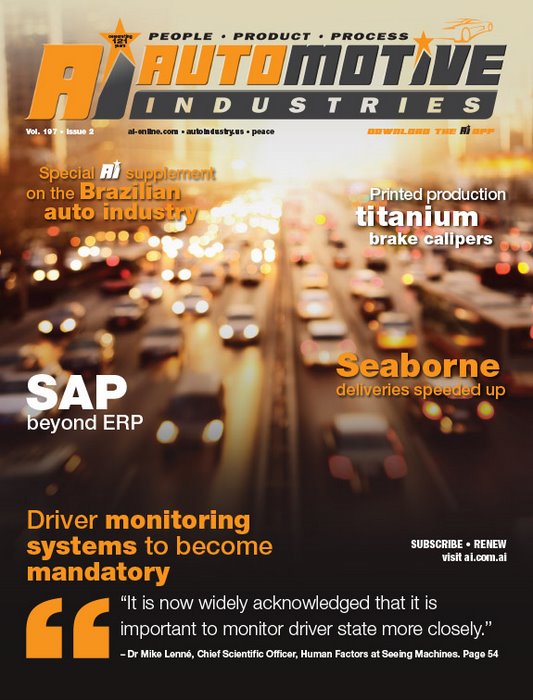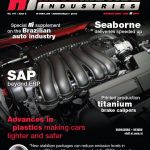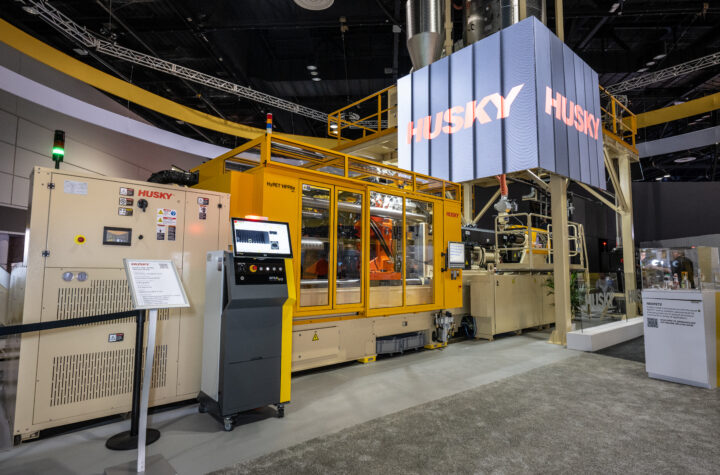This follows the May 2018 release of the European Commission “Europe on the Move” policy recommendations for the future of road safety, with specific proposals on advanced safety features. Ken Kroeger, Chairman and CEO of Seeing Machines says “we are delighted with the news that governments have formally recognized the importance of driver monitoring technology as a safety feature”.
DMS (driver monitoring system) technology is typically used to enable intelligent ADAS (advanced driver assistance systems)
and semi-autonomous driving systems as well as enabling advanced new display, safety and convenience features.
Seeing Machines technology is used in the General Motors’ Cadillac Super Cruise system, as well as two premium German
OEMs and another American OEM. DMS systems by Seeing Machines will be included in numerous new vehicle models
launching in the 2020-2022 timeframe. Seeing Machines’ FOVIO driver monitoring platform uses advanced machine
vision technology to precisely measure and analyze head pose, eyelid movements and eye-gaze under a full spectrum of
demanding lighting conditions, including through sunglasses.
Automotive Industries (AI) asked Dr Mike Lenné, Chief Scientific Officer, Human Factors at Seeing Machines, to explain the significance of the European Commission’s recommendations.
Lenné: They are a critical acknowledgement of the importance of measuring driver attention as a key platform in safe automotive systems. It is validation of the type of technology being developed by Seeing Machines. The recommendation is for DMS to be implemented in cars, trucks, vans and lorries, and we are well placed to address this market with both retrofit and OEM solutions.
AI: What are some of the driver safety issues that make DMS a critical safety prerequisite?
Lenné: For those driving today its’ primary role is as a safety system to identify driver distraction and drowsiness. It has been
known for many years that these conditions present significant risks to road user safety. Driving ‘tomorrow’ will involve increasing levels of autonomous technology with the vehicle taking on more of the driving task under an increasing range of conditions. It is now widely acknowledged in the industry that it is important to monitor driver state more closely.
OEMs want to be able to know more about the driver state and their engagement with driving before providing technology that allows drivers to take their hands off the wheel.
DMS helps to ensure that the driver remains sufficiently attentive to resume control as needed. General Motors’ Cadillac CT6 with Super Cruise (powered by Seeing Machines DMS) is a perfect example how this is applied.
AI: What is next for DMS?
Lenné: It is a significant achievement to detect driver impairment such as distraction, drowsiness or decreased engagement in
driving, and to warn the driver. A next evolution in safety will see the vehicle intervening more systematically if it knows the driver is impaired.
One major objective is to able to link the driver state, as measured by DMS, with the exterior vehicle sensing. That would mean, for example, that the vehicle would know whether or not a driver had seen another road user in time, and if not, could activate
safety systems such as braking earlier than the current collision avoidance systems such as automatic emergency braking (AEB).
AI: How has Seeing Machines been meeting these requirements?
Lenné: By ensuring we are building what the industry wants – by listening to customers and following the latest research to
ensure that our feature and platform development is tailored to meet industry needs. Seeing Machines participates and leads
a large number and varied type of in-depth Human Factors studies. A key value of the outcomes from these analyses is
their use to enhance driver state detection and prediction and our technology validation.
AI: How do the latest developments in your FOVIO technology platform help meet these challenges?
Lenné: The Seeing Machines FOVIO Chip is now being launched with a US OEM, which represents a step change in the delivery of our technology. We’re able to implement this solution very quickly, compared to other program designs, and at reduced incremental cost. But the other big factor here is that we’ll be able to use the chip to scale our automotive grade driver monitoring technology across a wide range of transport sectors, including all of our existing focused sectors.
Other developments involve our high-level driver state signals which focus on driver engagement and impairment which now form part of our commercial offering. Our approach to Human Factors and the high-quality data and studies that are undertaken underpin the development and advancement of these driver state features.
AI: Can you give us any details about Seeing Machines’ latest contract with a US OEM?
Lenné: We are delighted with this win on a couple of levels. Firstly, it’s with a major US OEM. The model(s) that will be included in the contract are high volume and this is really indicative of the focus on safety as autonomous technology advances, but also helps set Seeing Machines apart as the global leader.
This affirms that we are not just focused on the premium car, but are able to design solutions for a very broad segment of the market. Secondly, this program will be deployed via the Seeing Machines FOVIO Chip. This technology development represents significant opportunity for Seeing Machines, as well as all of the transport sectors we work with.
AI: What are some of the critical issues facing autonomous driving technologies?
Lenné:They include:
Safety– understanding the safety concerns through extensive testing. Fully understanding the conditions under which these technologies operate very well and where perhaps there are limitations. Critically important here is that consumers are made aware of the conditions and circumstances under which they should expect autonomous vehicle technologies to work well, or not.
Consumer acceptance– driver trust in these systems is critical to stimulate significant sales and uptake in the broader vehicle fleet. Linked to the testing issues noted above – if this is done well then trust should be high.
Communicating wity the driver– more so than ever it is important for the car to understand the state of the driver, but equally for the driver to understand the state of vehicle. The vehicle must have very good HMI that clearly indicates the status of the different automated functions to the driver, most notably the status of any “self-driving” mode, while effectively letting the driver know when they must resume control or when there is a system failure.
Regulation– providing industry-wide guidance and setting of standards that outline the functions that can be provided to ensure
a high bar is set.
AI: How will a company like Seeing Machines help meet these?
Lenné: Our Human Factors area has a long history of conducting road safety research and of developing and evaluating countermeasures. We are able to triangulate information on what the research trends are, the industry needs, regulatory trends and the needs of our business development teams to ensure that our R&D programs are addressing the current and projected use cases.
We conduct extensive testing in all sorts of conditions so that we can continually improve the technology. For example, we are
currently leading an automated vehicle trial in Canberra (CAN drive). CAN drive is an industry development and research program
between the ACT Government, Seeing Machines and local universities. CAN drive is using automated vehicle (AV) technology
to develop a world-leading road safety program aimed at promoting local industry and providing the evidence base to inform transport policy to reduce road trauma and support mobility.














































 Innovative lightweight solutions for the mobility of the future, made by Nemak
Innovative lightweight solutions for the mobility of the future, made by Nemak Advances in plastics making vehicles lighter, safer and greener
Advances in plastics making vehicles lighter, safer and greener Digital trends and new zones at Automechanika Shanghai 2018
Digital trends and new zones at Automechanika Shanghai 2018 HARMAN focusing on visual aspect of audio systems
HARMAN focusing on visual aspect of audio systems Bottom-line benefits of forged aluminum wheels
Bottom-line benefits of forged aluminum wheels Race to put Formula E technology on the road
Race to put Formula E technology on the road



